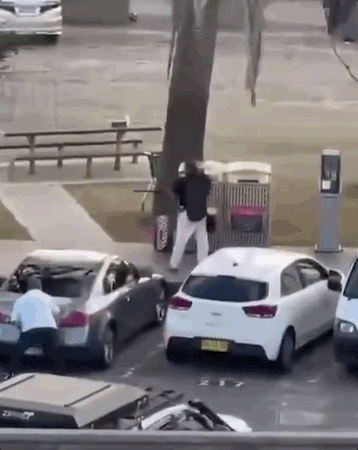When Dallas police finally cornered one of the suspected shooters in Thursday's deadly ambush at a Black Lives Matter rally, they were reluctant to put more cops in harm's way in order to finally end the bloody episode.
So they sent in a robot.
An explosive ordnance disposal robot, apparently carrying a small quantity of C4 explosive that bomb techs use to destroy suspicious packages, rolled into the building where the suspect—identified as Micah Xavier Johnson—had sought cover.
The explosives detonated, killing Johnson. Thursday's incident was apparently the first time American police have used a robot to deliver lethal force. But killer robots have crawled across foreign battlefields for a decade now—to say nothing of armed aerial drones, which killed their first terror suspect in Afghanistan in 2001.
"We saw no other option but to use our bomb robot and place a device on its extension for it to detonate where the subject was," Dallas police chief David Brown told reporters. "Other options would have exposed our officers to grave danger."
The Dallas PD did not respond to multiple requests for additional comment, following the massacre that killed five officers and wounded nine more people.
Virtually every major police department in America—and many minor ones—have explosive ordnance disposal robots similar to the one used in Dallas. The department's EOD 'bot—apparently a Northrop Grumman-made Andros F6 model with four wheels, a extendable claw arm and second, rigid arm holding the 'bot's main cameras—has seen action before. In June 2015, James Boulware shot up police headquarters in Dallas and then tossed in a pair of homemade bombs.
The police robot safely detonated both devices, but barely escaped the blasts. "Our EOD robot took a hit from the initial explosion but is still functional and in use," the Dallas police department tweeted.
In 2007, the U.S. Army modified a small number of these EOD robots to carry weapons. The military even shipped a few of these machine gun-armed robots to Iraq as a test, possibly to help guard military bases -- only to quickly withdraw the 'bots amid suspicion that the machines might not be entirely reliable.
Israeli bomb-disposal 'bots, which can carry shotguns on their extendable claw-arms for blasting apart suspicious objects apparently haven't gunned down any suspected criminals or terrorists. But the remote-controlled machines—which can weigh several hundred pounds in certain configurations—have been photographed rolling over the bodies of "neutralized" bombers in order to make sure they're really dead and haven't booby-trapped themselves.
A few years ago, U.K. authorities eavesdropped on a pair of British extremists discussing their plan to rig a remote-controlled toy truck with an improvised explosive device and drive it under the security gate at a military base in Luton. The two men were sentenced to prison in 2013.
Two years later, ISIS terrorists tried the same trick. They fitted a toy truck with a bomb and steered it toward Kurdish troops. But the Kurds managed to intercept and disable the 'bot before it exploded.
Today armies all over the world have acquired armed ground robots, usually posting them along borders and security perimeters where their human operators can keep close watch over them. Giving a robot the power to kill raises obvious ethical considerations—especially in a law-enforcement context.
The military has long struggled with the implications of fast-improving and widely-proliferating armed drones. How much control should human operators possess over killer machines? What checks and balances are necessary to ensure that drones don't target the wrong people? Are remote killings legal? Now police might have to ask themselves the same questions.
The robot in Dallas is a remote-controlled model with a human operator who directs the machine's every movement. For that reason, "it doesn't seem fundamentally ethically different from another distance weapon (like a sniper rifle) used to take out suspects in an active shooter situation," Keith Abney, a philosophy professor at California Polytechnic State University, wrote in an email to The Daily Beast.
"But one can wonder why, if they could send in a tele-operated robot with C4 to kill the suspect, why they couldn't instead equip the robot with knockout gas or some other nonlethal agent to capture the suspect, instead of killing him? Abney continued. "A robot that could do that may well be morally preferable to other available weapons in such situations."
The flip-side is that, just as cops can now send a machine on a mission of lethal force, criminals can just as easily do the same with cheap remote-controlled toys and homemade explosives. "These systems reinforce the power of individuals and small groups against the state," Peter W. Singer, a robotics expert and author of Wired for War, explained in a 2009 lecture.
In other words, it might not be long before the criminals follow the cops' lead -- and send robots to kill.






